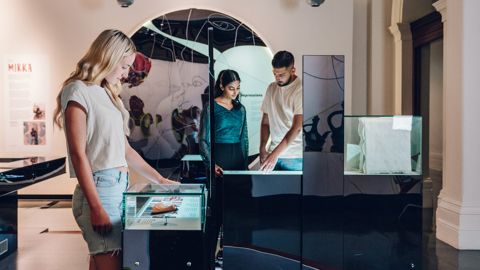Living Under the White Australia Policy: Setsutaro Hasegawa
Setsutaro Hasegawa’s migration journey from Japan and his life is Australia is a complex story of belonging and identity. Born in Japan in 1871, he arrived in Australia as a young man.
For Setsutaro, his move to Australia meant confronting the challenges of being seen as "other" in a country shaped by the White Australia Policy, pushing people like him to the margins of society.
His story reflects personal struggles of migration and how a person's life is influenced by the broader forces of racism, cultural clashes and the search for a place to call home.
The White Australia Policy and Anti-Asian Sentiment
When Setsutaro arrived in Australia, the country was shaped by strong anti-Asian sentiment and a growing push toward what would later become known as the White Australia Policy. This limited immigration from non-European countries, aiming to keep Australia white, English-speaking and European. As a result, Setsutaro’s Japanese background would have made him stand out.
This kind of exclusion wasn’t unique to Australia. Throughout British white settler-colonies—Canada, New Zealand, and the United States—anti-Asian sentiment was rife. People from Asia were often viewed as a threat to national security and cultural identity and the fear of difference led to widespread discrimination. In Australia, these ideas were backed by laws designed to keep the country racially homogeneous.
At the time, Setsutaro would have seen the tension between the life he had left behind and the one he was building in Australia. In a society that saw him as "other," he was caught between two worlds.
He opened up a laundry business, married Australian-born Ada Cole and had three children: Leo Takeshi, Moto Kozo and Joe Gonzo. Though Ada later left him, he bought a home and settled at 21 Little Ryrie Street, Geelong.
“The Japanese community in Geelong was tiny and consisted of four men who along with my great grandfather had married Australian women and ran laundries. They would, I am told, gather on a regular basis to chat in Japanese’. – Andrew Hasegawa
Setsutaro built a life in Australia while taking pride in his Japanese heritage. He wore the same three-piece suits as the white middle class; at home, he nurtured a Japanese garden, spent time breeding goldfish and raising birds—hobbies that tied him back to Japan and allowed him to maintain a connection to his heritage in an often-hostile society.
World War II: Incarceration and the Impact of Fear
World War II marked a turning point in Setsutaro’s life. When Japan attacked Pearl Harbour, Australia’s fear of Japanese loyalty grew. The government, worried about possible spies or threats, rounded up people of Japanese descent and other immigrants from Asia, including Setsutaro.
Around 4,000 people seen as Japanese were sent to internment camps as a result of the anti-Asian hysteria that had been building for years. After 55 years of living and working in Australia, having an Australian family, his life was overturned.
At 70 years of age, he was seen as an ‘enemy alien’ and sent to Tatura internment camp, living in harsh conditions in these difficult years. Even during these harsh times, Setsutaro remained steadfast in his Japanese identity. When asked if he was loyal to Japan at a tribunal, he answered without hesitation: “Naturally.”
The Intergenerational Legacy
The effects of racism didn’t end with World War II. Setsutaro’s children and grandchildren faced their own battles with assimilation—the pressure to blend in with the dominant Australian culture. It was a time when many children of Japanese immigrants felt they had to hide their heritage, changing their names or distancing themselves from anything “foreign” in order to avoid discrimination.
But for Setsutaro’s great-grandchildren, his legacy didn’t vanish. The artifacts of his life—old photographs, a pocket watch, letters, suits and stories—became ways to remember and reconnect with their heritage. These objects and memories offered a bridge to connect their dual identities of Japanese and Australian.
For immigrants like Setsutaro, home was always a place of movement—he balanced multiple cultures, showing that identity is not fixed but always in flux, shaped by many factors.
The struggles Setsutaro faced—racism, the pressures to assimilate, and preserving his heritage—still echo today. As more people move between countries and cultures, the question of where we belong is complicated. Who decides who belongs? And how do people balance different layers of identities?
For some people belonging might have a simple answer, but Setsutaro’s experiences shows that for many others, belonging both shifts and evolves over time in a changing world.






